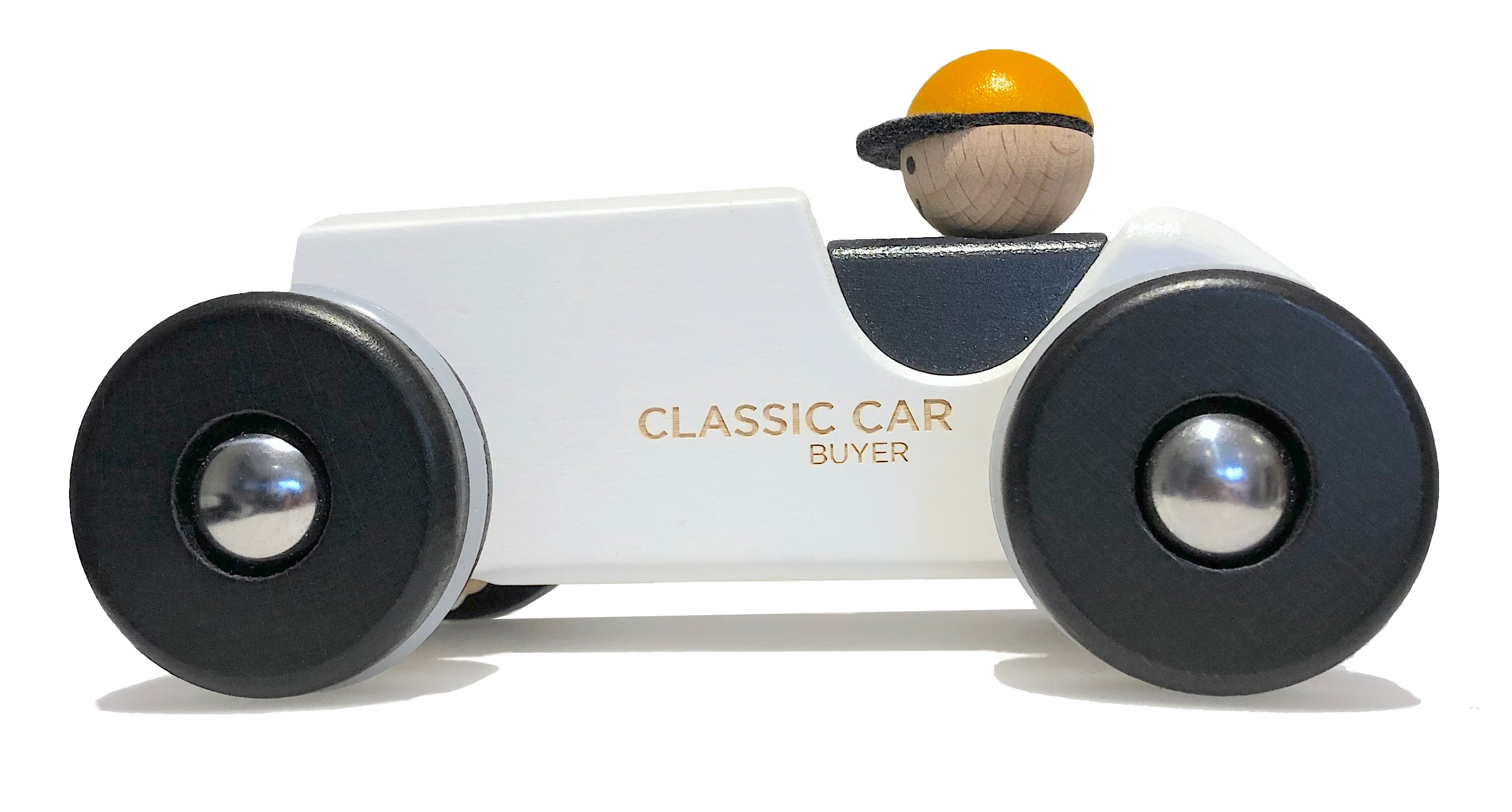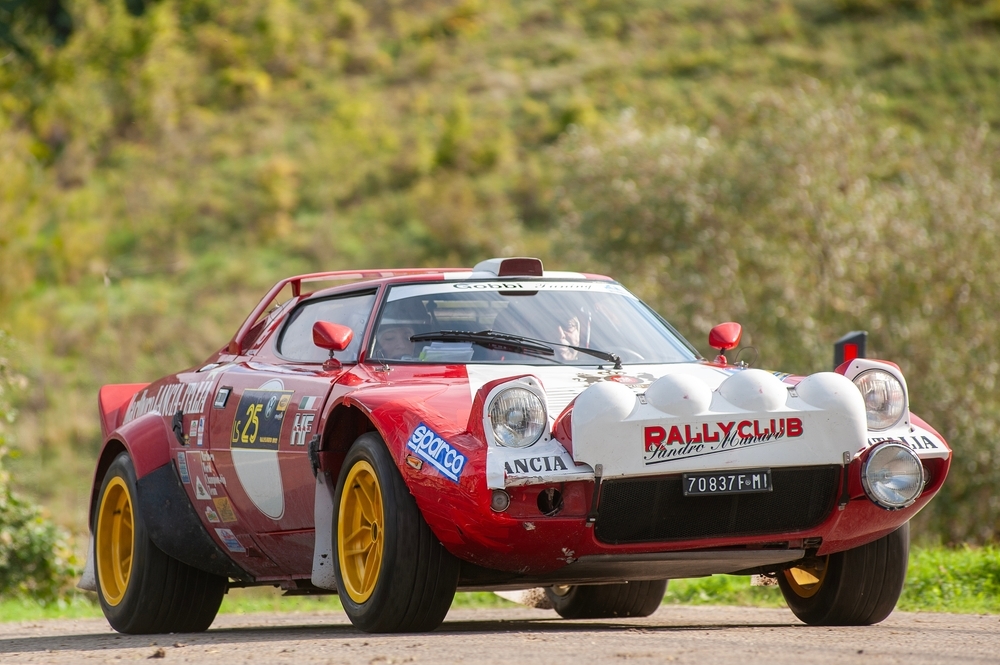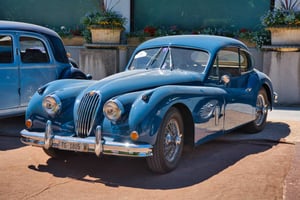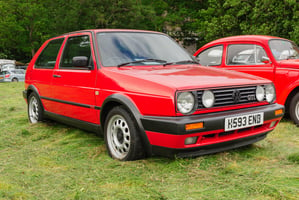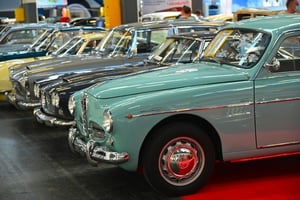Before you have the keys in your hand of that classic you’ve been coveting for a while (possibly...
Ah, the exciting world of rally car racing! If you’re not familiar with the concept, it usually involves a driver plus a co-driver, driving on closed roads, racing against the clock as opposed to going head-to-head with other cars. There are many rally events available, such as those within the World Rally Championship (WRC), over many different categories and surfaces. With events often spanning over hundreds of kms and several days, there’s definitely something for everyone’s tastes.
As motorsports go, rally driving is challenging, fast and tests the skills of both the driver and the co-driver across many potential terrains and weather conditions. The driver needs to be exceptional at their job, of course, but the co-driver has an important role too - they navigate, read pace notes to the driver throughout the different stages (or timed sections on the course, as it’s known), including information on jumps, hazards, distances and speed.

In terms of the vehicles, these are real cars, on real roads, going real fast. The cars themselves look like fairly ordinary cars you’d see out driving on the road. But, inside, it’s a different story in terms of mods! These engines are built for acceleration and torque. There are roll cages, super strong suspensions, and all manner of changes to make the cars last the course (so to speak). To participate in an event of this speed and endurance certainly requires that they are a little bit special, to compete with the best in this slightly crazy sport!
And crazy it is. Indeed, to quote from an article on Wired.com, ‘Rally racing is a glorious, lovely thing, all noise and violence and sliding sideways between trees at 100 mph.’
What’s not to like?!
So let’s have a look at our top five cars that made the cut. If we’ve not listed your favourite below, let us know in the comments what it is, and what makes it stand out for you!
The Ford Escort RS Cosworth
According to the WRC, the Ford Escort has arguably gone on to be the most successful rally car of all time. The Ford Escort RS Cosworth was purpose-built with rallying in mind and quickly became an icon of the 1990s. Developed for Group A rallying, it featured a turbocharged 2L Cosworth YBT engine capable of producing over 224bhp. What really set it apart was its sophisticated four-wheel-drive system and distinctive ‘whale-tail' rear spoiler, which offered both traction and downforce on both gravel and tarmac stages. Its chassis was derived from the Sierra RS Cosworth, providing a solid platform for the harsh demands of rallying.
In the WRC, it made its debut in 1993 and quickly proved competitive for the next five years or so. Driven by stars like François Delecour, it didn’t win the WRC but it took many podiums and rally wins, often battling head-to-head with the likes of the Subaru Impreza and the Toyota Celica GT4. Its blend of power, agility and durability made it a fan favourite and certainly a feared rival.

The Lancia Stratos
The Lancia Stratos was a revolutionary rally car that reshaped the sport in the 1970s. Purpose-built for rallying, it featured a striking wedge-shaped body designed by Bertone and a mid-mounted Ferrari Dino V6 engine that delivered around 190bhp. Compact, lightweight, and incredibly agile, the Stratos was designed to dominate twisty rally stages, with its short wheelbase and balanced layout giving it sharp handling and remarkable performance on many surfaces.
Making its competitive debut in the early 1970s, the Lancia Stratos quickly became a dominant force in the World Rally Championship. It secured three consecutive manufacturers’ titles for Lancia from 1974 to 1976, thanks to legendary drivers like Sandro Munari. Its success was unprecedented and cemented Lancia’s status as a rally powerhouse. Even decades later, the Stratos remains one of the most admired rally cars of all time; loved not only for its success on the stages but also for its bold design and motorsport pedigree.

The Audi Quattro
Part of the Group B era, the Audi Quattro revolutionised rallying when it debuted in 1980, introducing four-wheel drive to top-level competition in a move that would permanently alter the sport. Before the Quattro, most rally cars were rear- or front-wheel drive, but Audi’s innovative all-wheel-drive system provided unmatched traction, particularly on loose and slippery surfaces. Powered by a turbocharged 2.1 litre five-cylinder engine, the early Quattro produced around 200bhp in road-going form, with competition versions eventually exceeding 500bhp. Its combination of brute power, clever engineering and advanced drivetrain technology gave it a distinct advantage over its rivals.
In the World Rally Championship, the Audi Quattro made an immediate impact. With drivers like Hannu Mikkola, Michèle Mouton, and Stig Blomqvist, it notched up numerous victories and helped Audi secure manufacturers’ titles in 1982 and 1984. The Quattro was certainly successful, and in being so it changed the game. Its dominance forced other teams to adopt four-wheel drive, effectively setting a new standard in rally car design.

The Peugeot 205 T16
The Peugeot 205 Turbo 16 was Peugeot’s bold entry into the ferocious Group B rally era, and it quickly became one of the most successful and iconic cars of its time. While the standard 205 was a modest supermini, the rally version was anything but. It featured a mid-mounted, turbocharged 1.8 litre engine and a sophisticated four-wheel-drive system. Designed to comply with Group B’s loose regulations, the 205 T16 pushed the limits of technology and performance, producing upwards of 400bhp in competition spec and delivering explosive acceleration and razor-sharp handling.
Debuting in the World Rally Championship in 1984, the 205 Turbo 16 quickly established itself as a dominant force. With Ari Vatanen and Timo Salonen behind the wheel, Peugeot clinched back-to-back manufacturers’ titles in 1985 and 1986, along with a drivers’ title for Salonen in 1985. The car’s blend of agility and power made it perfectly suited to the unpredictable and punishing rally stages of the era.
Even after the cancellation of Group B, the 205 T16’s legend endured, symbolising the raw, unfiltered excitement of a golden age in rallying history.

The Toyota Celica GT4
The Toyota Celica GT-Four (often called the GT4) marked Toyota’s serious commitment to World Rally Championship competition from the latter part of the 1980s through to the mid-1990s. Built around the production Celica, the GT-Four featured a turbocharged 2 litre engine and full-time four-wheel drive, making it a formidable competitor on all surfaces. Initially launched with the ST165 model, it evolved through the ST185 and ST205 variants, each more powerful and refined than the last. The ST185 in particular became the most successful, benefiting from improved suspension, aerodynamics and a powerful 3S-GTE engine.
On the world stage, the Celica GT-Four delivered Toyota its first WRC drivers’ title in 1990 with Carlos Sainz, and continued to perform strongly throughout the early part of the decade. It took two more drivers’ championships - in 1992 with Sainz again and in 1993 with Juha Kankkunen - along with a manufacturers’ title in 1993. The Celica was respected for its strength, reliability and adaptability across diverse rally terrains. Though it was eventually succeeded by the Corolla WRC, the GT-Four remains a celebrated chapter in rally history and helped solidify Toyota’s long-term presence in the sport.

Phew! That’s quite a list, we think you’ll agree! Let us know of your favourites below…


